
19 minute read
Open Season
Savannah Elephants Make a Comeback
FOR THE LAST FIVE MONTHS, Virunga National Park in the Democratic Republic of the Congo has been undergoing an unexpectedly rapid transformation thanks to an aggregated herd of about 580 African elephants that have crossed into the park from bordering Uganda’s Queen Elizabeth National Park— and stuck around.
story by GLOBAL WILDLIFE CONSERVATION
Together with the 120 or so elephants already in Virunga, this current group of elephants makes up at least 700 individuals. A er decades of poaching across the continent, groups of this size are increasingly rare. e move to Virunga is not only the result of the park’s recent and critical conservation e orts in its central savanna, but as the elephants tear through the trees and pummel invasive bushes, they are also transforming the landscape back to a true grassland savanna, allowing the return of grazers and other wildlife species that have been absent from the park for the last two decades: buffalo, Ugandan kob, warthogs, topi, and even a pair of lions.
“For years I haven’t seen any animals when I ew over this area—just rebels,” said Anthony Caere, an anti-poaching pilot at Virunga National Park. “Now not only are we seeing the elephants, which is an unbelievable sight from above, but we’re noticing the impact of such a big herd on the park. ey’re restoring everything back to what it was 50 years ago and doing so much faster than we could have imagined. If the elephants continue to stay here in these numbers, this place will look totally di erent in just a few years.”
In recent decades, smaller numbers of elephants would move naturally back and forth between Queen Elizabeth National Park and Virunga, which was the rst national park to be established in Africa and is home to more species of birds, reptiles, and mammals than any other protected area on the continent. In recent years, however, the presence of armed militia who hunt the animals and illegal agriculture in Virunga scared away most of the savanna elephants. To address these threats, Virunga rangers and sta have focused on securing the area from militia presence and working on development initiatives with the local community.
“ is is a really incredible example of rewilding our planet by giving nature a bit of help and then le ing the elephants, in this case, take care of the rest,” said Wes Sechrest, Global Wildlife Conservation chief scientist, and CEO. “Providing the conditions for nature to recover is critical to the future of our planet as we tackle climate change, wildlife extinction, and pandemics. Virunga is demonstrating that it is possible for us to not only protect wildlife and wildlands but to restore them in ways that will help ensure a healthier planet.” e joyous return of the elephants at these numbers comes during a particularly tough year for Virunga, which has been closed to tourism since March and, as a result, has struggled to sustain its critical functions. In addition, on April, 12 Virunga rangers, a driver, and four members of the local community lost their lives in a ferociously violent a ack by a militia group, the deadliest known a ack on park rangers on the African continent in recent history. All of this while rangers and sta have been managing the impacts of both Ebola and COVID-19 on the park and local communities. e park, with support from Leonardo DiCaprio, Global Wildlife Conservation, Emerson Collective, and the European Commission, launched a Virunga Fund earlier this year to provide urgent support to the park to deliver critical disease prevention e orts, law enforcement, and the protection of its wildlife, in addition to supporting the families of rangers who have fallen in the line of duty. Donations can be made at h ps:// www.globalwildlife.org/virunga-fund/.
“ e return of large elephant herds to Virunga is the outcome of decades of extraordinary e orts on the part of Congo’s park rangers,” said Emmanuel de Merode, director of Virunga National Park. “Considerable work remains to ensure that the park makes a signi cant contribution to the wellbeing of the local community.”

help and then le ing the elephants, in this
Rhino Poaching Relief
WORLD WILDLIFE FUND (WWF) welcomes the news today of a 33 percent reduction in the number of rhinos lost to poaching in South Africa in 2020 and ongoing decline in the number of rhinos lost annually to poaching over the last six years.
story by WORLD WILDLIFE FUND ree hundred and ninety-four rhinos were poached for their horn in South Africa during 2020, marking the sixth consecutive year showing a decline in poaching. In 2019, 594 rhinos were poached for their horn in South Africa.
However, WWF is very aware that the apparent reprise provided by lockdown restrictions due to Covid-19 in 2020 was only a temporary pause and that the pressure on rhino populations, particularly in Kruger National Park, remains very high.
At the same time, it is critical to note the decline of almost 70 percent in the number of rhinos in the Kruger National Park over the last ten years due to a combination of drought and poaching, as re ected in the recent SANParks 2019/20 annual report. e situation could be far worse, were it not for the hard work and dedication of South Africa’s rangers and other law enforcement o cials in state, private and community-owned parks to prevent, detect and prosecute wildlife crimes in the eld and apprehend suspected poachers.
In order to amplify these e orts on the ground and fully turn the numbers around, the factors that enable transnational crime syndicates to operate need to be addressed.
Environment Minister Barbara Creecy referenced the dra National Integrated Strategy to Combat Wildlife Tra cking (NISCWT), which prioritizes the need for collaboration to break the illicit value chain of wildlife tra cking. WWF looks forward to the formal approval of this strategy and investment in the skills, equipment, tools and resources to fully bring it to life.
Corruption goes hand in hand with organized crime networks and continues to undermine the last decade of implementation of various strategies to combat rhino poaching in South Africa. ere needs to be focused a ention on rooting out corrupt individuals who facilitate these crimes.
In addition, the factors known to cause criminal behavior to proliferate locally need to be addressed, including lack of local opportunities, high levels of inequality and breakdowns in social norms and values in societies around conservation areas.
Dr. Jo Shaw, Senior Manager Wildlife Program, WWF South Africa, said “We welcome the news today of a 33 percent reduction in the number of rhinos lost to poaching in South Africa last year and ongoing decline in the number of rhinos lost annually to poaching over the last six years. However, we are very aware that the apparent reprise provided by lockdown restrictions in 2020 was only a temporary pause and that the pressure on our rhino populations, particularly in Kruger National Park, remains very high.
“To stop rhino poaching, we need to address the factors that enable wildlife traf cking syndicates to operate. We must ensure skills, equipment, tools and resources are dedicated to fully implementing an approved National Integrated Strategy to Combat Wildlife Tra cking. We must commit to root out corruption, which continues to jeopardize e orts to break the illicit value chain for rhino horn. At the same time, we need to address the factors known to cause criminal behavior to proliferate locally, such as lack of opportunities, high levels of inequality and breakdowns in social norms and values.” •
Here’s Where to See Red Wolves in Texas
THE RED WOLF, CANIS rufus, is one of the most endangered mammals in the world.
Declared extinct in the wild in 1980, they faced hybridization with more adaptable coyotes. Now a number of scientists believe the species is actually a fertile hybrid of gray wolf and coyote, to begin with, but the red wolf at this point is still declared a unique species.
story by CHESTER MOORE e Texas Zoo is one of the rst in the nation to take part in the captive breeding program that has produced o spring that have been stocked at several locations in the Southeast including North Carolina’s Alligator National Wildlife Refuge. e wolves there are kept in a spacious, naturalistic enclosure where with a good camera with a solid telephoto lens and fast shutter speed you have a good shot at capturing images like the one above.
One of the best parts of the wolf exhibit is that it is located close to a coyote exhibit. Coyotes are o en mistaken to be wolves and here you can see a clear contrast and also note the similarities. e vast majority of the animals at the Texas Zoo are Texas natives but there are also tigers and other exotics now included to give some variety for visitors.
If you are ever near Victoria, which is situated o of I-59 between Houston and Corpus Christi, stop by and see the red wolves and the other wild creatures that call it home.
It’s got a nice collection of animals and charm the size of the Lone Star State.
For more information to go Texaszoo.org.

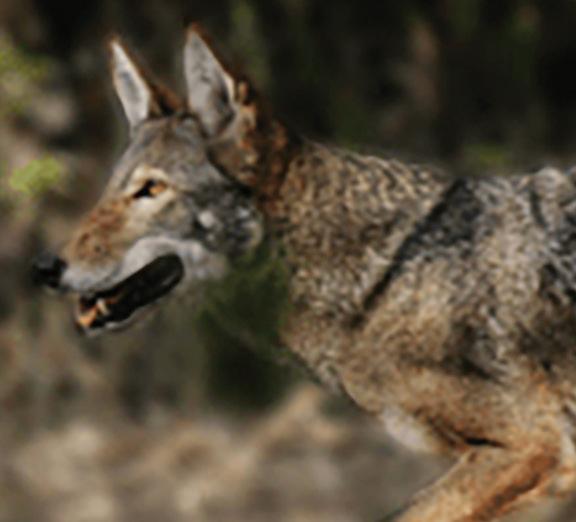
A red wolf recently photograped by the author at Texas Zoo in Victoria.


by LENNY RUDOW :: TF&G Boating Editor
Sweet & Sour Flounder Sandwich; Plus Drum Stix
ONE OF THE REASONS FLOUNDER is so popular is its clean, fresh taste. ere’s li le of the shiness that permeates the meat of some other species, and ounder readily adapts to whatever spice or avor is applied to it. As such, it works well with combinations of avors that might otherwise be drowned out by stronger, meatier sh. Cook up a batch of Sweet and Sour Flounder Sandwiches, and you’ll notice that the meat seems to soak up[ the avors without losing its own input.
2 tablespoons lime juice ½ pound ounder llet 1 egg ¼ teaspoon salt ½ cup baking mix (such as Bisquick) Vegetable oil 1 tablespoon orange marmalade
Pour the lime juice over the sh and allow it to marinate in the refrigerator for half an hour. Beat the egg in a small bowl, and dredge the sh in it. Mix the salt into the baking mix, then dredge the sh through it.
Heat the oil in a saucepan on mediumhigh heat. Fry the ounder until it’s crispy brown. Remove and drain the sh, and top it with the orange marmalade before placing on a bun and serving. Note: this recipe also works well if you substitute a mint sauce for the marmalade.
CATCH SOME NICE REDFISH WHEN you’re on an extended shing trip and you’d be er have plenty of ice on hand. at or a lot of hungry mouths, because the amount of meat you’ll get o this sh’s anks is amazing. Either way, when a red sh comes over the gunwales the evening’s meal is
established. And if you’ll be cooking in the usual camping fashion (with limited supplies) Drum Stix is the way to go.
4 strips bacon 1 cup our 1 tablespoon black pepper 1 teaspoon salt 1 to 2 pounds red sh llets, cut into nger-sized strips 1 cup whole milk
Fry the bacon in a pan. When it’s done remove the bacon strips but leave the grease in the pan. In a bowl, mix the our, pepper, and salt. Dredge the sh through the milk, and then through the our and spices. Prepare all the strips for frying before you begin cooking them, so they all get equal cooking time.
When the sh is prepped, place the drum stix in the hot bacon grease and fry them
for about two minutes per side. Slice into a test strip to ensure it’s cooked all the way through, drain, and serve.

From Lenny’s book, OFF THE HOOK: Rudow’s Recipes for Cooking Your Catch, published by Schiffer Publishing and available at schillerbooks.com

Guides & Outfi tters :: Lodging :: Destinations :: Real Estate :: Gear
TEXAS FRESHWATER
LAKE TEXOMA

DFW METROPLEX
TEXAS SALTWATER
UPPER TEXAS COAST

EXPLORE THE OUTDOORS!
GET YOUR TF&G APPAREL HERE! WWW.FISHGAME.COM ORDER TODAY!!!
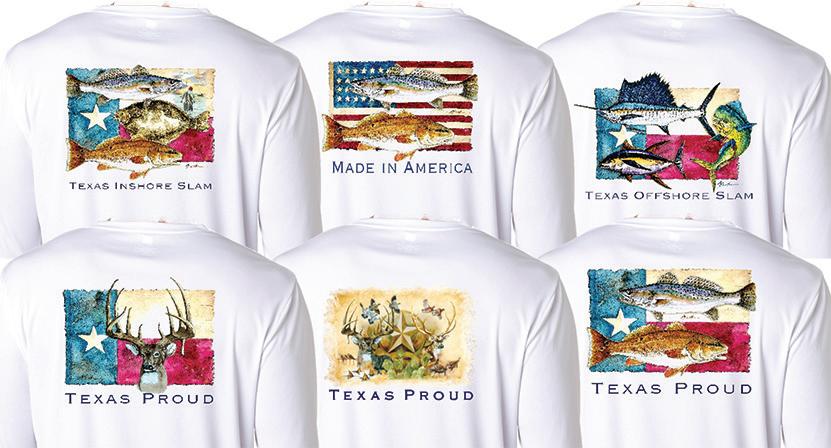
TEXAS SALTWATER TEXAS SALTWATER
MID TEXAS COAST LOWER TEXAS COAST




LOWER TEXAS COAST
HUNTING
SOUTH TEXAS




by REAVIS Z. WORTHAM :: TF&G Humor Editor
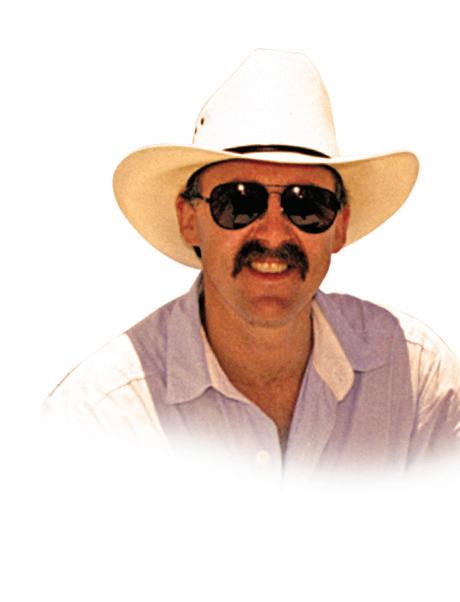

Acid Indigestion
THE HUNTING CLUB MEMBERship seated in the round corner table of Doreen’s 24 HR Eat Gas Now Café was unusually quiet. For once no one was complaining about the wind, the humidity, or Doreen’s co ee.
My stomach rumbled, and I dug out a bo le of antacid. Doc watched me shake one into my hand. “I didn’t think you took medicine like the rest of us.”
“I have to take a blood pressure pill every day, but lately I’ve had to pop these to keep my stomach acid down.”
Doreen hollered from behind the counter. “Your blood pressure’s high from hanging around with those guys all the time.”
Wrong Willie sipped at his co ee. “I have stomach acid, too. I think it’s from drinking too much co ee.”
“Probably the co ee in here,” Woodrow mumbled.
“What was that!!!???” came from Doreen’s direction.
He recovered quickly. “Uh, I said we probably need more co ee over here.”
She came around with the pot in one hand and an aggravated look in her eye. “ at’s not what I heard.”
Doc burped, “Well, too much fried food gives me acid.”
I looked at his greasy plate. Twenty minutes earlier, it was stacked with fried cat sh, French fries, and fried okra. “You should have ordered something else.”
He held out a hand, “Too late now. e good thing is these days you can enjoy what you want, and then pop a li le modern chemistry and you’re good to go.”
I shared a pill as Doreen glared across the round table at Jerry Wayne. “What gives you stomach acid?”
“You, being mad at me.”
I was about to comment, when Delbert P. Axelrod came through the door with a half-grown lab puppy on a long leash. Smiles bloomed around our table, and a few female customers squealed with delight at his big oppy feet, long wet tongue, and adorable antics.
I’m talking about the puppy, not Delbert.
Doreen wheeled around. “Get that dog ou a here.”
“Aw, he’s just a puppy. He’ll behave himself.” Delbert gave the dog some line when the pup saw 90-year-old Miss Pennington and her daughter having lunch at a nearby table.
Miss P’s reactions are a bit slow, and she’s hard of hearing, but her mind is still as sharp as it ever was. She paused in her dissection of a chicken fried steak and pushed back from the table. She extended her long, bony hand to the puppy, who ran over on his clown feet to get some a ention.
She rubbed on him for a few seconds, then scratched his ears, murmuring baby talk. He se led down in a half-sit, half- op position on one hip and closed his eyes. e second she quit scratching his ear, with his eyes still closed, the pup’s nose exed, and he scented Miss P’s gravy-covered steak only a foot away.
His eyes snapped open. We could see it coming from our booth. On the opposite side of the table, Miss P’s daughter recognized the danger as well. “Mama, you be er scoot up closer.”
“What hon?”
“Howdy boys,” Delbert said with his back to Miss P’s table. e air turned thick as molasses. In slow motion, Doc extended one hand, “Noooo…”
Miss P’s daughter’s eyes widened, and she also held out a hand. “Mom…”
Wrong Willie hid his eyes.
Woodrow hollered, and it came out slow and distorted…“Stoooooppp!!!”
Mouth in a silent O, Miss P pulled back her head. At the same time, the 20-pound lab pup launched himself with the dexterity of a scud missile, all out of control and ailing around. He bounced from her lap to the tabletop, his rear in her face, and Miss P’s nose right in his. . .
Anyway, like a blow from a baseball bat, the dog’s tail slapped Miss P’s glasses completely o her head. ey ew away in slow motion. at’s when the pup became as perfectly coordinated as a ra lesnake strike, and time resumed normal speed. He snatched the steak o the plate and bolted for the nearest safe location to consume his manna from heaven.
It was right under our feet.
Gasps.
Screams.
Curses.
Struggles in our booth to evacuate lest the guys incur Doreen’s wrath.
Trapped in the center, I froze in place and pretended to be part of the red vinyl booth.
Feet slapped on tile as the Hunting Club membership launched themselves out the front door.
Doreen lunged for the dog as Delbert crawled under the table on his hands and knees, whether to grab the dog or hide from Doreen, no one knew.
I raised my feet out of the way. Doreen kicked him in the rear and Delbert a ened on the oor. e dog evacuated from his safe haven, slinging gravy across the tile and walls, then charged around behind the counter to nish his chicken fried. Delbert nally gathered himself and grabbed the long leash, reeling the pup in like a struggling bass. Eyes bugging from the strain, the pup appeared around the corner.
Delbert stood. “Sorry Doreen. We’re leaving.”
“You bet you are.” e dog swallowed the last bite of steak and looked around. en nature took its course. Obviously, some training was in place, because as soon as the pup licked his lips one last time, he had to do what comes naturally
“Uh oh,” I said.
“What?” Doreen spun to see the dog hunker beside Miss P’s table and leave a warm deposit.
Doreen’s legs gave out and she dropped into the booth beside me. She stuck out her hand. “I tell you what gives me acid. You guys.”
Standing outside and looking in, the boys pointed at their stomachs, then at the pill bo le in my hand. Instead of defending myself, I dropped an antacid into her palm and slid my water glass over.
“I completely understand, and that’s why I take ‘em, too.”
Email Reavis Wortham at ContactUs@fi shgame.com



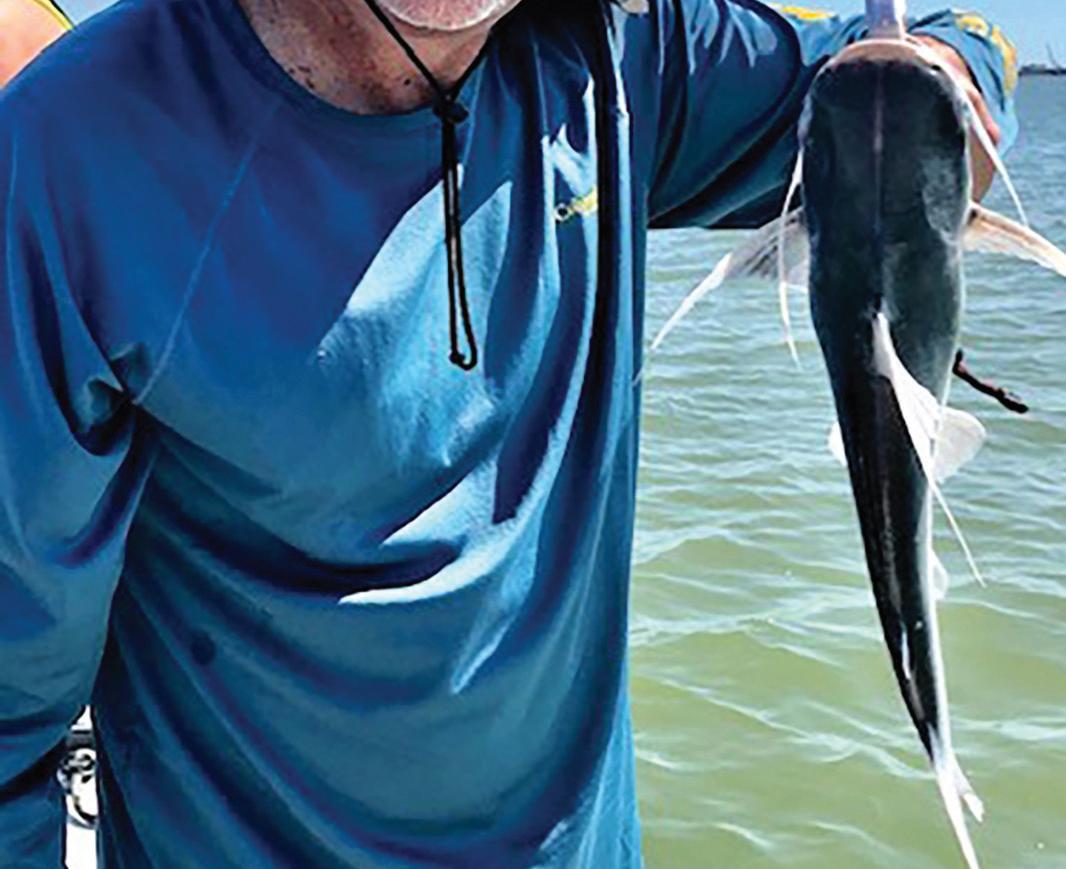


BASS
East Texas


Paxton Jarvis of Greenville caught this East Texas “heartbreaker” on a spinnerbait while fi shing with his Popa. GAFFTOPSAIL CATFISH


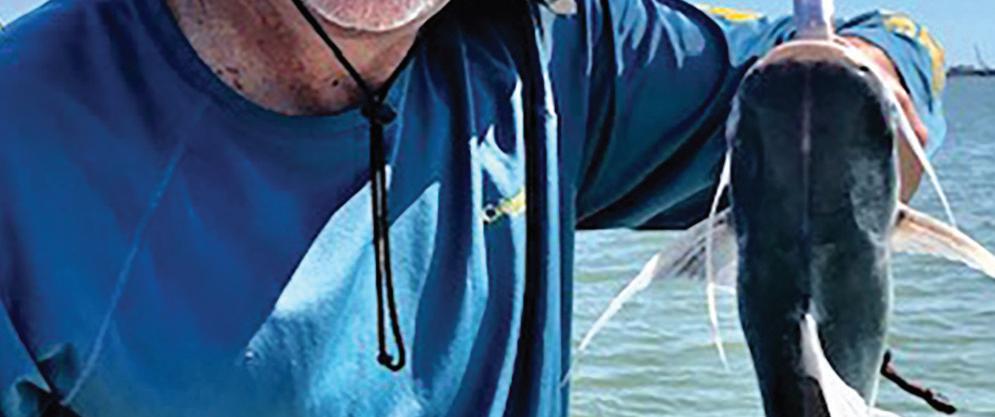

Galveston
Darren Pyfer of North Richland Hills shows off the Gafftop Sail catfi sh that he caught while fi shing with his family near the Pelican Island Bridge in Galveston.
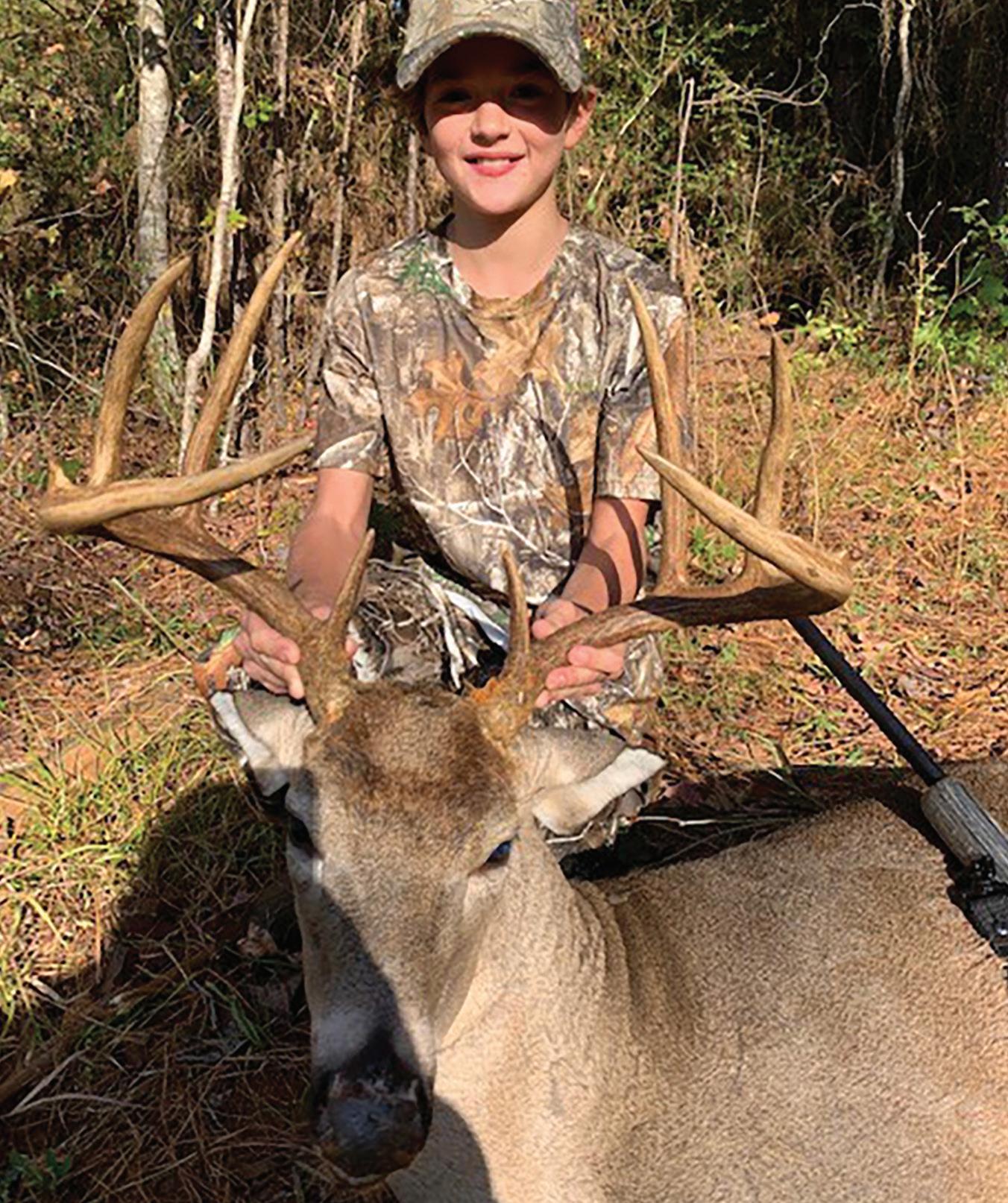
WHITETAIL

San Augustine County

Eleven-year-old Christian Mathews took down this eight-point buck on the Mathews Ranch in San Augustine County. His dad, Bryan, was his guide. CATFISH
Dripping Springs
Twelve-year-old Grant Reagan caught this 24.26 pound catfi sh at a friend’s private pond near Dripping Springs. It continues to hold the pond catfi sh record.

For best results, send MED to HIGH quality JPEG digital fi les only, please.
Also Enter our PHOTO CONTEST: FishGame.com/hotshots
No guarantee can be made as can be made as to when, or if, a to when, or if, a submitted photo submitted photo will be published. will be published.
BLACK DRUM
High Island
Jay Gonzales caught this black drum while fi shing at High Island. He was excited because it was the biggest fi sh he has caught thus far on the Gulf Coast. FERAL HOG
Robertson County
Eleven-year-old Kohen Christopher of Montgomery shot his fi rst hog while hunting with his Pops, Charlie Swan of Hemphill, in Robertson County. He shot the near-200-pound hog at 159 yards.

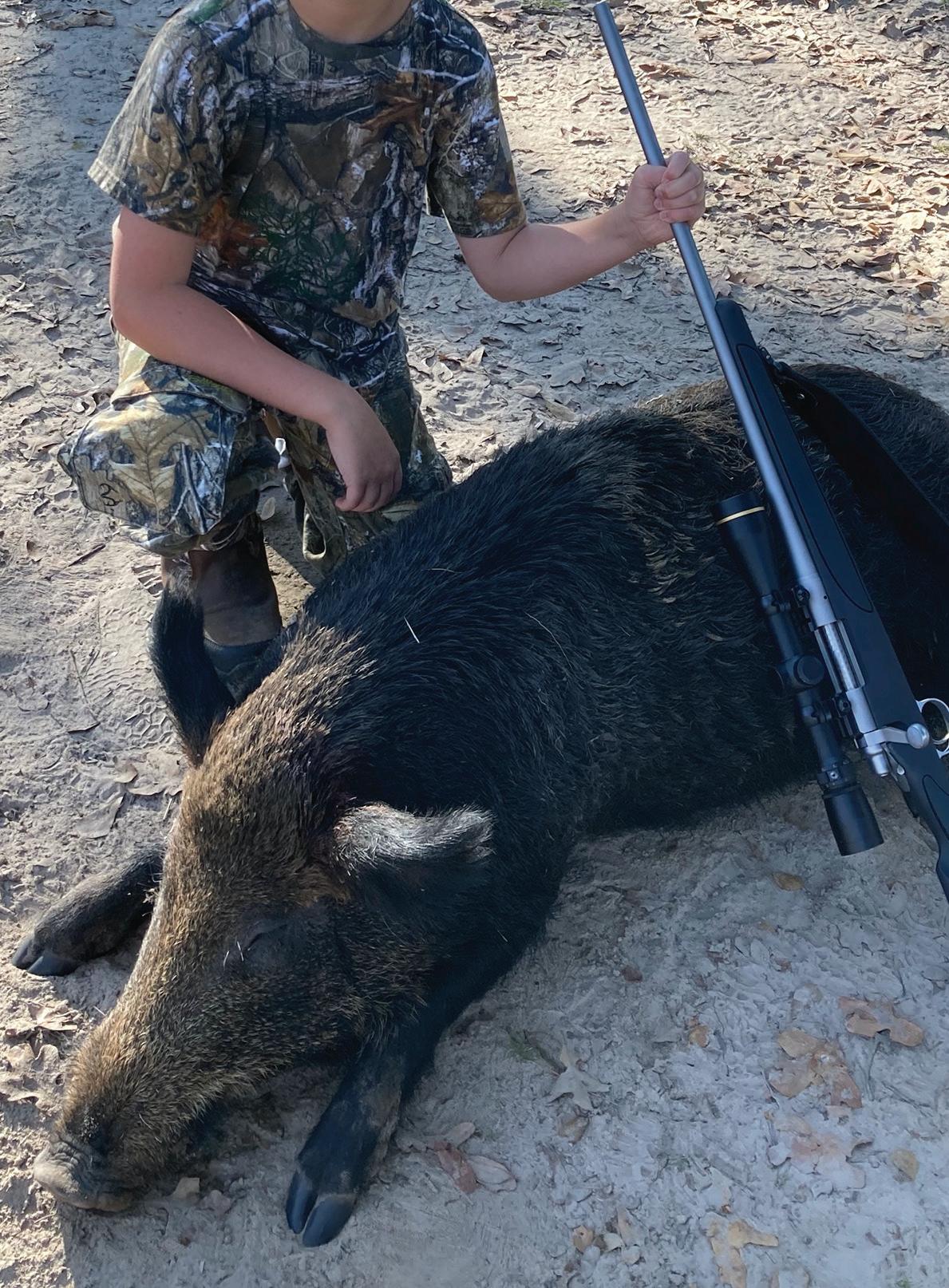



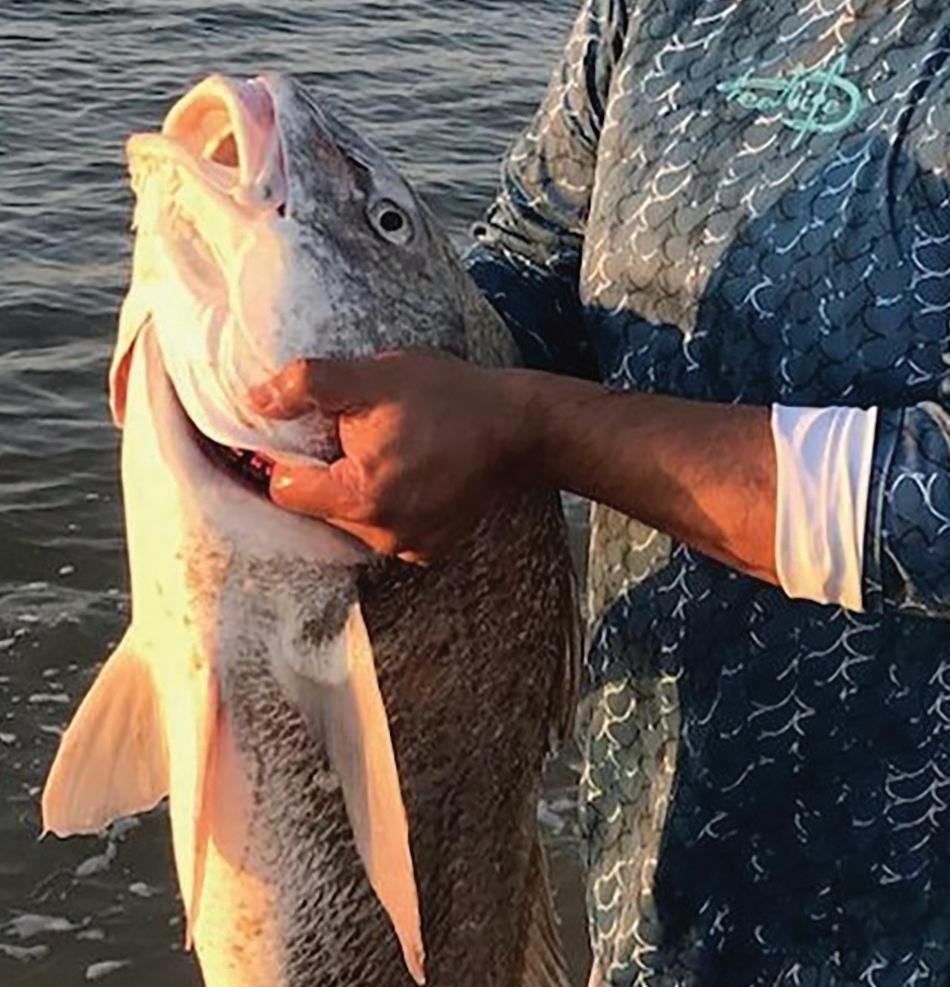



RACOON
Rusk County

Eight-year-old Grayson Holland killed this boar coon while hunting with his mom in Rusk County.

BLACK DRUM
West Galveston Bay
Bobby Polk of Argyle shows off one of the several baby black drum caught while fi shing the West Galveston Bay with his two sons.














